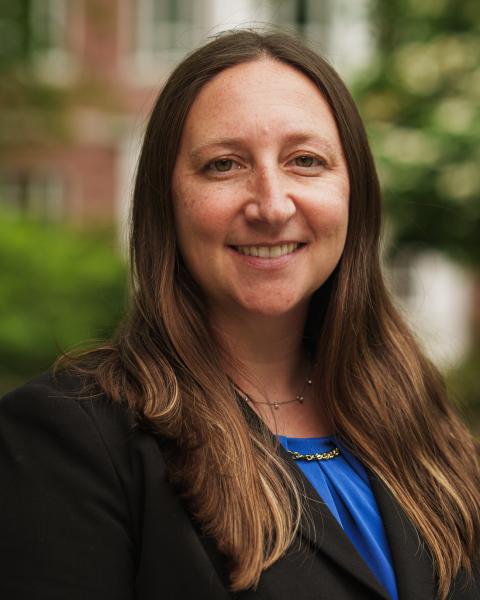Hit the Trail, Then Stop Downtown

You’ve just hiked a winding trail through the New Hampshire woods where you caught sight of white-tailed deer, listened to warblers and snapped panoramic photos of fir trees beneath a clear blue sky.
Hiking has worked up your appetite, so you hop in your car and drive across a bridge, following signs into town where the sweet smells of pastries and coffee lure you into a café. You’ll relax here for a bit before wandering into the small bookstore across the street with works by local authors. Then it’s on to the antique store and a boutique to stock up on novelty gifts before ending the afternoon with a pint of craft beer from the pub.
This idyllic outing might seem too good to be true but it’s a model that Extension’s community and economic development (CED) team is helping communities realize, thanks to its new nature economy initiative. In 2018, with support from a Northeast Regional Center for Rural Development (NERCRD) grant, Extension established a multistate, collaborative network to explore connections between downtowns and trails.
The Outdoor Industry Association reported in 2017 that outdoor recreation accounts for $887 billion in annual U.S. consumer spending. Extension staff learned about the social, natural, leadership and infrastructural conditions that can help towns leverage natural capital and then worked with dedicated volunteers in Bristol for a pilot program to understand how its bike path could better connect to the downtown.
Bristol is in Grafton County and has approximately 3,300 year-round residents. In the summer, seasonal inhabitants increase the population to 6,500. Its town square is listed on the National Register of Historic Places.

Extension staff worked with residents to recognize opportunities to utilize existing resources—which include locally owned businesses and access to a variety of lakes, rivers and forests—and identify areas for improvement through several spatial assessments, community-conducted interviews and surveys.
Extension staff trained 20 volunteers on how to complete interviews with businesses, residents and community leaders. They also trained volunteers on how to administer intercept surveys for recreators using the trails. This feedback was then handed to Extension for analysis and reporting.

Brittany Overton, director of Bristol’s Minot-Sleeper Library, became a volunteer for this initiative. “I love surveys, community conversations, listening to what other people have to say. I don’t think as a society we listen enough,” she says.
Overton emphasizes the value of the community forum that was organized to share results from the surveys and brainstorm next steps. It drew 30 community members. “I think that this downtown revitalization project encouraged the volunteers, who are everyday citizens, to feel that they could play a role in the bigger picture of what our community looks like,” she says.
The forum resulted in two distinct action items. The first was to create a committee to address town communication and marketing. The second was to establish an effort to help business owners and others become better ambassadors for the town.
Bristol has already drawn up a plan for improved signage as well as a request for marketing assistance. Extension will continue to support the action committee in Bristol while its volunteers work toward implementing some of the recommendations from this new program.
Shannon Rogers, Extension’s nature economy chair, recognized the importance of community support. “We strategically think about making sure volunteers represent a broad cross section of backgrounds and areas of interest. Extension provides training to build capacity so that community members can create change,” she says.
Learn more about nature economy.
Related Resource(s)
